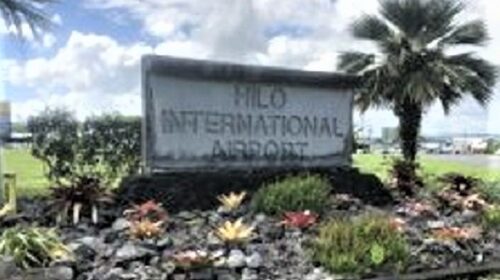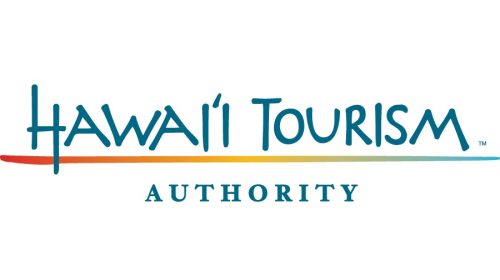Senator Schatz’ Secret on Reopening the Hawaii Visitors Industry
US Senator Schatz confirmed today in a Facebook Q&A that Hawaii could learn from new record increases of the virus in warmer climate states. The Senator also confirmed Hawaii as an island is in a better position to protect itself from bringing the virus in, but at the same time, he made sure not to blame tourists for the slow but sudden increase in his home state.
An island state like Hawaii and other island territories were able to protect themselves from importing the dangerous virus but are silently being torn between US Government wish to reopen the country, the downfall of their own economy, and the health of their citizens.
In almost all cases, this is mostly related to the travel and tourism industry.
Hawaii is the only island state in the United States. In addition to Hawaii, the United States also owns island territories including Guam, the Northern Mariana Islands, American Samoa, Puerto Rico, and the US Virgin Islands.
Yesterday 1,547 arrivals were recorded from out-of-state and international destinations at Hawaii’s airports. Among those arrivals yesterday, 495 were visitors.
Visitors have to quarantine in hotel rooms for 2 weeks. Many say this regulation looks good on paper but is almost impossible to be enforced. Who would go on a week or two-week vacation and be forced to stay in a hotel room? There are daily reports of tourists being fined or even arrested, but out of 495 arrivals and 1 unlucky tourist arrested per day, everyone can do the math.
“Most of those infected came in as returning residents and not tourists,” Senator Schatz Schatz said. Returning residents are also required to observe a 2-week quarantine, but such enforcement is literally impossible.
The Trump administration has been pushing to reopen the country causing an alarming increase in the virus spread.
The US Government never stopped anyone from flying to Hawaii, but Hawaii Governor Ige together with Honolulu Mayor Kirk Caldwell is seeing the danger and are doing their utmost to delay the relaunch of the travel and tourism industry.
Allowing a slow and what they call the safe return of businesses to be allowed to open, Hawaii has been the most conservative state when it comes to reopening its economy.
Three weeks ago, eTurboNews asked Mayor Caldwell if the delay in considering the legal return of visitors without quarantine is done on purpose to see the effects of opening tourism in other states, like Florida. Mayor Caldwell responded with a clear, “Yes.”
Today, 3 weeks later it appears the test for Florida and Arizona to open up the economy failed and caused many to get sick or die.
What can Hawaii do? Keeping the economy closed is not an option. The state has hardly any financial resources left.
It is so bad, that today Mayor Caldwell pleaded with locals to visit the only Royal Palace in the United States, Iolani Palace in Honolulu, so the Palace can keep the air-conditioning on and maintain their interior. The mayor warned everyone working for the Palace may be furloughed. The city has no money to maintain the iconic building, and the city and the State of Hawaii have no money to keep going with the tourism industry shut down.
Iolani Palace is also a major tourist attraction, and the Mayor agreed it should be a World Heritage site. As a UNESCO World Heritage site, there may be international funding, and the attractiveness of the structure would rise to a global level.
When asked about the U.S. leaving UNESCO, the Mayor said it was a shame the United States was leaving UNESCO and also the World Health Organization.
Two weeks ago, shops and restaurants slowly opened in Hawaii; there were the unexpected mass gatherings including Black Lives Matter protest marches; and the opening of beach parks, stores, and restaurants which caused the highest number of increases in COVID-19 cases on Oahu with 27 cases just yesterday and 18 the day before.
These numbers are completely okay and are still just a fraction of what is going on in the rest of the United States. Florida tops 3,822 new cases, Arizona follows with 3,246, and Texas with 2,971 new cases.
Opening Hawaii for tourism may be a short-sited mistake and may delay the “real opening” even more if implemented too quickly.
Senator Schatz, facing 22% unemployment, predicted hundreds of thousands of Hawaii’s 1.4 million residents may be forced to move to the US mainland if tourism cannot return soon. Apparently there is no ready-to-go plan B for the Aloha State outside the travel and tourism industry. The Senator did not explain what this would do to the economy, the hotels, the restaurants, and the tourism infrastructure.
Repeating what people in the travel industry think, the Senator mentioned tourism bubbles, meaning to open travel corridors between regions that have low virus numbers. How this could be translated for Hawaii safely, he most likely did not have a clue.
The Hawaii Senator now is following the same theme the U.S. Government created. Schatz’s official version is a statement of a safe return of the tourism industry. Torn between the known and unknown, he added: “Nothing is fully safe, but we cannot stay closed until a vaccine is developed. Even if a vaccine is developed, it won’t be available immediately for everyone.”
He warned, “This will get worse before getting better in financial and also health terms.”
Realizing what he just said, he quickly added: “We are not the mainland. We can do this together. Take a deep breath. This is not political. Let’s keep ourselves safe and jobs and schools open.”
Without saying so, did the senator have a hidden appeal? Was this a message and an endorsement for Hawaii, Governor Ige, and Mayor Caldwell to move as slowly as possible?
What is on the table is a decision for the health and the economy, which for Hawaii, the economy means tourism.
The Trump administration decided on the economy and included regional tourism.
States are now forced to decide for the economy, specifically without adequate federal and local resources.
For some political leaders, a conscious understanding of realities may be too big to hide. Are Senator Schatz, Mayor Caldwell, and Governor Ige such political leaders? Are they building a legacy for themselves most of those in the Aloha State do not yet understand?
The big question is what is next, and how can “next” be delayed without breaking the economy and livelihood of the people?
Senator Schatz, Mayor Caldwell, and Governor Ige all agree on one theme:
Wear a mask, wash your hands, and observe social distancing.
#rebuildingtravel




